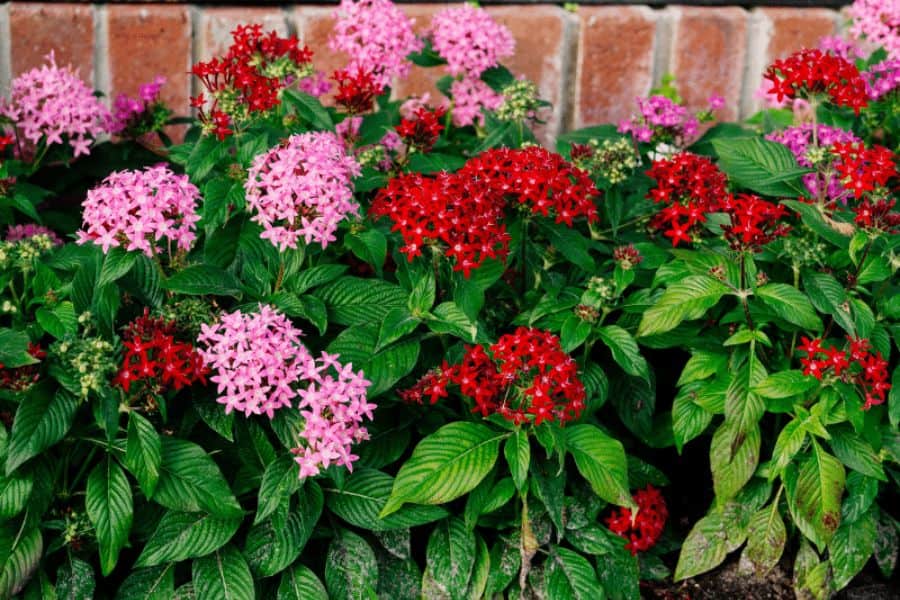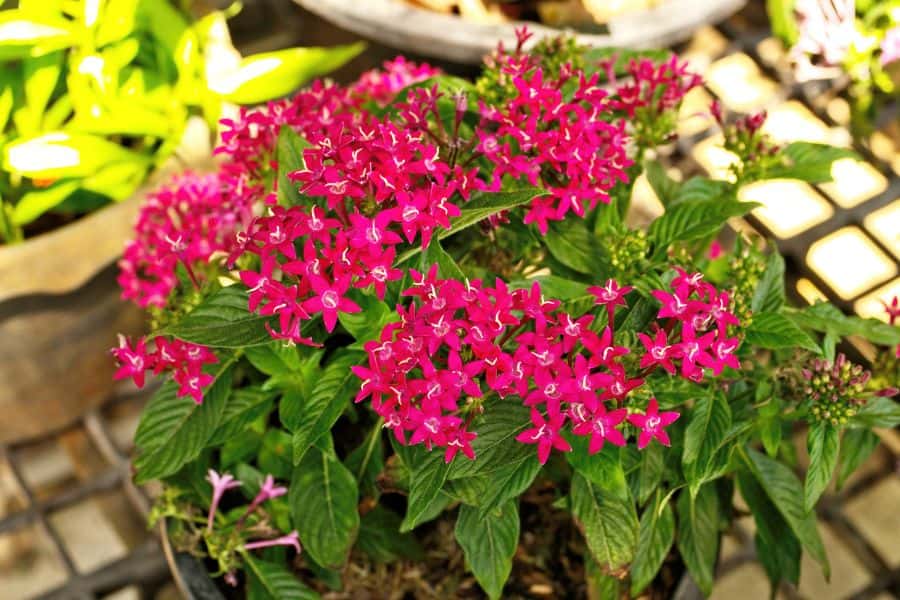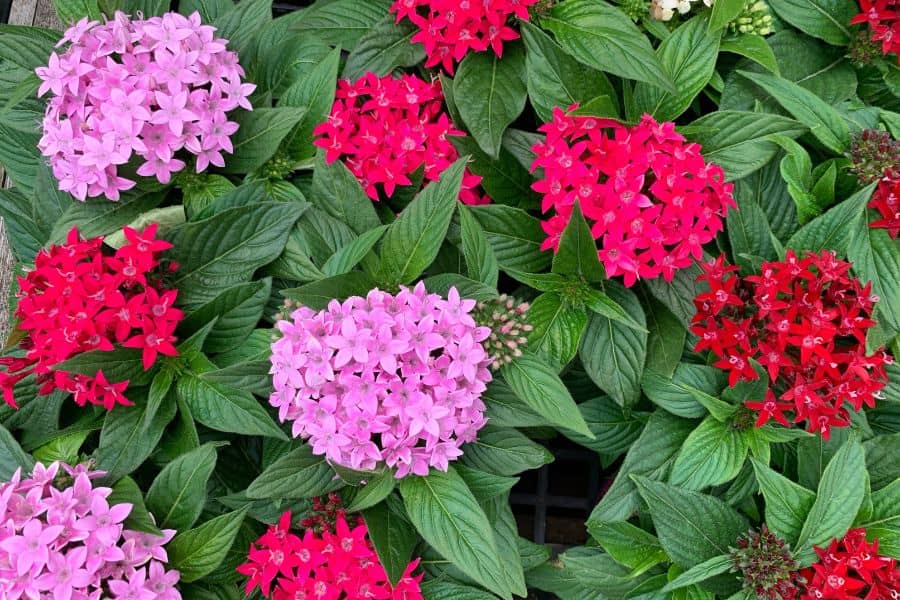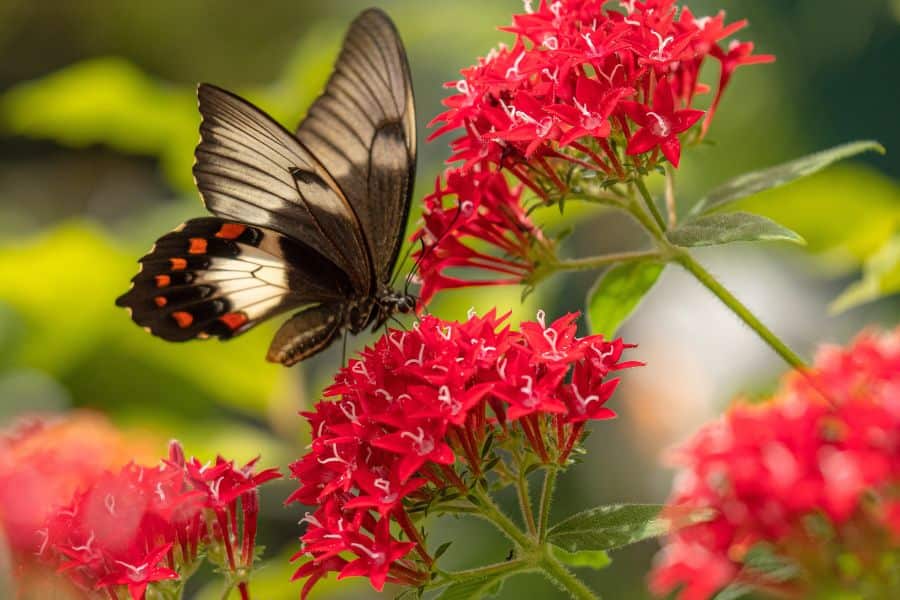In the realm of gardening, few plants can match the vibrant charm and enduring beauty of Pentas. Known by its botanical name Pentas lanceolata, this tropical beauty belongs to the Rubiaceae family and is native to Africa. Pentas has become a popular choice among gardeners for its vibrant and long-lasting flowers that attract bees, butterflies and hummingbirds. Pentas are one of the few annuals that attract bees. Consequently, to attract pollinators, grow Pentas!

Our Selection of Pentas
At Martin Garden Center, we begin growing Pentas in January and they grow very slowly. By April (4 months later), we have Pentas available to sell. It is so very important that we have Pentas to sell at the beginning of the growing season because Pentas are a pollinator attractor and we want the bees to have a place to perch at the beginning of the growing season until the other bee attractors are flowering.
Most years, we grow the Lucky Star Mix because it is compact at 10-16 inches, though we are willing to change if we must. From April (if available) through the summer season into fall, we stock Pentas in 4″ containers as well as 6″. We generally have a full table stocked with 80+ Pentas, with all colors and numerous varieties including Graffiti, Lucky Star, Butterfly, Starcluster, Sunstar and more.
How to Grow Pentas
Pentas thrives in warm, tropical or subtropical climates, making them a favorite for gardens in regions with ample sunlight and mild winters. Native to Africa and the Arabian Peninsula, these plants have adapted well to a variety of conditions. However, they flourish when exposed to full sun or partial shade. Pentas also prefer well-draining soil with a slightly acidic to neutral pH that is enriched with organic matter.
Caring for Pentas requires attention to a few key factors:
- Regular watering is essential, especially during the plant’s early growth stages. Water the plants regularly, especially during dry periods, allowing the top inch of soil to dry between waterings.
- Fertilization is another critical aspect of Pentas’ care. Use a balanced, slow-release fertilizer to encourage healthy growth and abundant flowering.
- Pruning spent flowers and removing any dead or yellowing leaves enhances the plant’s appearance and promotes continuous blooming.
- Regular deadheading prevents the plant from self-seeding excessively, helping to manage its growth and ensuring a tidy appearance in the garden.

Leaves and Flowers
Its foliage is marked by lance-shaped, dark green leaves that form a dense and attractive backdrop to the vibrant flowers. The leaves are often arranged in opposite pairs along the stems, giving the plant an organized and symmetrical appearance.
The flowers of Pentas come in various hues, including shades of red, pink, lavender, and white. They cluster into tight, spherical umbels, creating a striking visual spectacle. These blooms attract pollinators like butterflies, bees, and hummingbirds, making them a valuable addition to any pollinator-friendly garden.

Uses in the Garden
Pentas is a versatile choice for both aesthetic and functional landscaping. As a bedding plant, Pentas forms colorful and lush patches that can be used to create borders, edgings, or mass plantings. Their compact growth habit also makes them excellent choices for container gardening, adding vibrant accents to patios, balconies, and entrances. Pentas also contributes to biodiversity and ecosystem health by attracting pollinators. Their resilience in warm climates and ability to withstand some degree of drought makes them ideal for xeriscaping and water-conservation efforts.

Frequently Asked Questions
Are Pentas Annuals or Perennials?
Pentas are typically grown as annuals in many regions. They are native to tropical and subtropical areas and thrive in warm climates. Pentas often do not survive the winter in colder areas where frost occurs and are thus treated as annuals.
Do Hummingbirds Like Pentas?
Yes, hummingbirds are attracted to Pentas and often visit the plants to feed on their nectar-rich flowers. The tubular shape of Penta’s blossoms makes them particularly appealing to hummingbirds, as these birds have long bills and specialized tongues adapted for extracting nectar from such floral structures.
How Tall Do Pentas Grow?
Pentas typically grow to a height of about 2 to 4 feet, although the exact height can vary depending on the specific cultivar, growing conditions, and regional climate. Pentas have a bushy and compact growth habit, with multiple stems emerging from the base of the plant.
